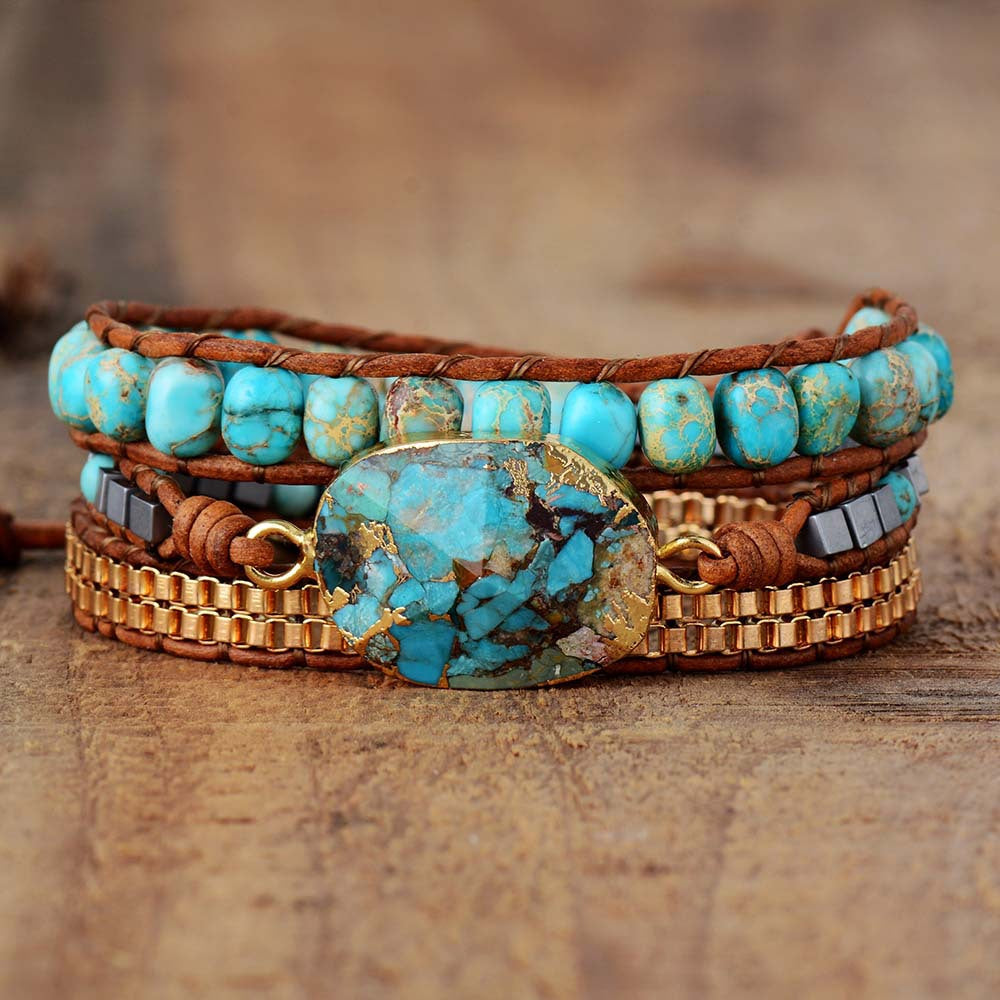
The Sustainability of Turquoise Jewelry: Ethical Beauty for a Greener Future
Share
Turquoise jewelry has captivated people for centuries with its stunning blue-green hues and deep cultural significance. However, as consumers become more conscious of their environmental impact, the question arises: Is turquoise jewelry sustainable?
At Sustaina Collective, we believe in sustainable, ethically sourced jewelry that not only enhances your style but also protects the planet. In this blog post, we’ll explore the sustainability of turquoise, the ethical considerations surrounding its mining, and how to make eco-friendly choices when purchasing turquoise jewelry.
Understanding the Environmental Impact of Turquoise Mining
1. Mining and Its Effects on the Environment
Turquoise is a naturally occurring mineral found in arid regions worldwide, particularly in the United States (Southwest), Iran, China, Mexico, and Egypt. However, mining for turquoise can have significant environmental consequences, including:
- Land Degradation – Traditional mining practices often involve large-scale excavation, leading to soil erosion and habitat destruction.
- Water Usage & Pollution – Extracting turquoise requires significant water resources, and in some cases, the chemicals used in mining operations can contaminate local water supplies.
- Carbon Emissions – Large-scale mining operations contribute to carbon emissions through fuel-powered machinery and transportation.
To combat these issues, many ethical jewelers and sustainable brands are working to source responsibly mined or recycled turquoise that minimizes harm to the planet.
2. Ethical Sourcing & Fair Trade Turquoise
What is Ethical Turquoise?
Ethically sourced turquoise comes from small-scale, low-impact mines or is reclaimed from vintage jewelry, reducing the need for new mining. Ethical turquoise ensures:
✅ Fair wages for miners
✅ Safe working conditions
✅ Minimal environmental impact
Native American Artisans and Sustainable Practices
Many indigenous communities, particularly in the Southwestern United States, have been handcrafting turquoise jewelry for generations. Supporting Native American artisans ensures that the jewelry is not only authentic but also produced using sustainable, traditional methods that respect the land.
Look for certifications such as:
✔️ Fair Trade Certified – Ensures workers are fairly compensated.
✔️ Certified Native American Handmade – Guarantees authenticity and supports indigenous craftsmanship.
✔️ Ethically Sourced – Indicates turquoise has been mined or reclaimed in an eco-conscious manner.
3. Choosing Sustainable Turquoise Jewelry
When shopping for turquoise jewelry, here’s how you can make sustainable and ethical choices:
1. Opt for Recycled or Vintage Turquoise
One of the most sustainable ways to wear turquoise is by purchasing vintage or upcycled jewelry. This reduces demand for new mining while preserving the beauty of existing stones. Recycled turquoise often comes from older jewelry that has been repurposed into new designs.
2. Buy from Eco-Friendly Jewelers
Many independent designers and ethical brands prioritize:
- Sustainably sourced turquoise
- Handcrafted jewelry with minimal waste
- Eco-friendly packaging
Before purchasing, check if the jeweler provides transparency about where their turquoise is sourced and their commitment to sustainable practices.
3. Avoid Dyed or Fake Turquoise
Some manufacturers use dyed howlite or synthetic stones to imitate turquoise, which can be misleading. These stones may be treated with harsh chemicals, making them less eco-friendly. Genuine turquoise has unique imperfections and a natural matrix, while dyed stones often appear too uniform in color.
4. Eco-Friendly Care for Your Turquoise Jewelry
To extend the life of your turquoise jewelry without harming the planet, follow these eco-friendly care tips:
- Avoid Harsh Chemicals – Turquoise is porous and can be damaged by chemicals in commercial jewelry cleaners. Instead, use a soft cloth and mild soap.
- Store Properly – Keep turquoise jewelry in a cool, dry place, away from direct sunlight and moisture to prevent discoloration.
- Repair & Restore – Instead of discarding broken pieces, work with an artisan to repair or repurpose your jewelry, keeping it out of landfills.
The Future of Sustainable Turquoise Jewelry
As sustainability becomes a priority in the fashion and jewelry industries, responsible mining, ethical sourcing, and upcycled materials are shaping the future of turquoise jewelry. By making conscious choices, we can support fair labor practices, protect the environment, and preserve the beauty of turquoise for generations to come.
